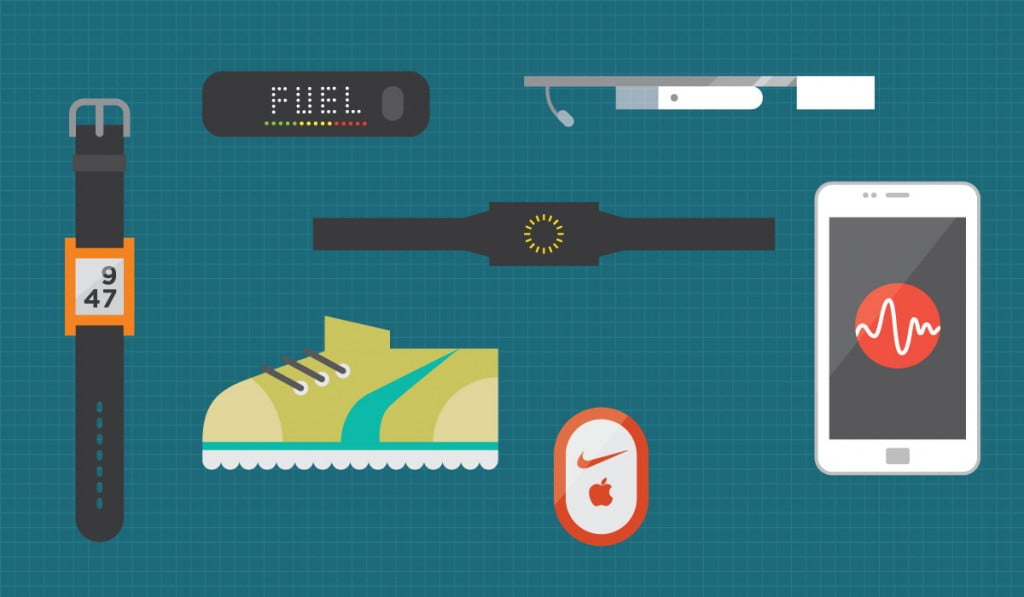The future of Wearable Electronics — the best is yet to come…
Ask the average man or woman in the street what we mean by ‘wearable electronics’ and you’ll either be met with a blank stare, or at best you’ll get a guess at the latest Galaxy smartwatches. If the person you ask is into their sports, then they may also cite the Nike FuelBand that records everything from your heart rate and the intensity of your exercise session, to how well you’re sleeping.
But those in the business believe that in the wearable electronics market, the best is yet to come. If we’re totally honest, the smartwatches that are available at the moment are…well, they’re okay. Yes, you can check your emails on them and yes, they do technically fall under the auspices of ‘wearables’, but like any first generation product, they’re pretty basic.
What they do have, however, is potential — and not just the potential to get really ‘teched up’, but to introduce the concept of truly personal electronics to the public at a personal level. From devices worn on the wrist to head’s up displays in our glasses, wearables are only just starting to make their presence felt in the wider marketplace.

But in truth, this tech has been around for a while, and has been welcomed with open arms in the medical industry and the military. So isn’t it time that the public caught up with the next generation of technology?
Google Glass — turning us all into walking search engines?
Take for example the revolutionary Google Glass. A head’s up display designed to be right there, in front of you, and all confined into a wireless device that looks (sort of) like a pair of ordinary glasses. Instead of waving your smartphone around a street to access an app that tells you what that weird looking statue is supposed to be, now all you do is look at it, and Google Glass will access the same app technology and put the information up right in front of you. It’s known as ‘augmented reality’, and it’s going to be huge in the next few years. But for augmented reality to really take hold, it needs to make the most of flexible technology that can be worn by the user, rather than carried.
Head in the Cloud, and hearing voices…
Wearable technology doesn’t just have the potential to connect us up directly to electronic devices, but also to the wider world via the Cloud. Not only that, but wearable tech could then enable us to understand any language too. The SIGMO is a translation device that clips onto your tie or can be worn around your wrist. It’s a wireless device that, when connected up to the Cloud, can provide a real time voice translation in up to 25 different languages. And just to make it even more interesting, the project was crowd-funded and blasted past its initial target of $15,000 and reached nearly a quarter of a million dollars, showing just how excited people were at the thought of such a useful little device. It seems that Star Trek’s ‘universal translator’ just came true…
The future of bio-electronics
What has really allowed wearable tech to shoot forward in its development into an everyday concept is the advent of flexible display screens, like those created by flexible display specialists Plastic Logic. The development of full-colour flexible screens is particularly important, as Plastic Logic CEO Indro Mukerjee explains: “Plastic Logic’s flexible plastic displays are completely transformational in terms of product interaction.”
“The development of a colour flexible plastic display is particularly significant, since the same process could enable unbreakable, flexible display solutions with other media such as OLED.”
And it’s that product interaction that’s key to how consumers relate to wearable electronics in the future. Lightweight, flexible and robust enough to put up with everyday life, wearables are the ultimate development in truly ‘personal’ computers. That development could be truly revolutionary, and represent a massive step forward in how human beings interact with the world around them, and even one another.
Author Bio
Verena blogs about gadgets and technology, covering everything from the latest mobile advancements to display technology. When she’s not online Verena enjoys swimming, cycling and travelling the world.
